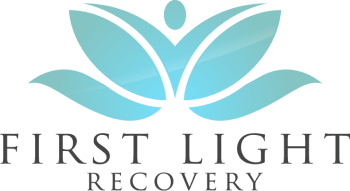Understanding PTSD in Young Adults
Understanding post-traumatic stress disorder (PTSD) in young adults is essential for recognizing the profound effects of trauma and the importance of timely intervention. Many young individuals encounter traumatic experiences, and understanding their impact can lead to better treatment options and recovery paths.
Impact of Traumatic Events
Traumatic events can significantly affect young adults, with the Substance Abuse and Mental Health Services Administration reporting that more than two-thirds of adolescents have experienced at least one traumatic event. Such experiences vary and can include school shootings, car accidents, sexual assaults, and domestic violence. The repercussions are often severe, leading to mental health disorders, behavioral issues, and unhealthy coping mechanisms such as substance abuse or self-harm.
Untreated trauma can manifest in various ways, derailing educational and career opportunities and negatively impacting relationships and overall quality of life. Approximately 44% of mental disorders with onset in childhood and 30% of those beginning in adulthood are linked to developmental trauma [1]. This highlights the critical need for interventions that address traumatic experiences before they escalate into more serious mental health issues.
Symptoms of PTSD
The symptoms of PTSD can vary widely among young adults and may disrupt numerous aspects of life. Key symptoms often include:
| Symptom Type | Description |
|---|---|
| Intrusive Memories | Recurrent, unwanted thoughts or flashbacks related to the traumatic event. |
| Avoidance | Steering clear of reminders of the trauma, including conversations, activities, or places that trigger memories. |
| Negative Changes in Thinking | Persistent negative thoughts about oneself or others, leading to distorted beliefs and feelings of hopelessness. |
| Changes in Physical and Emotional Reactions | Symptoms such as heightened anxiety, irritability, or shock response can arise due to reminders of the trauma. |
These symptoms, as noted by the Mayo Clinic, can fluctuate in intensity and may be triggered by stress or the reminders of the traumatic incident.
Overall, understanding the impact of traumatic events and recognizing the symptoms of PTSD in young adults is crucial in fostering an environment conducive to healing. If you or a loved one is experiencing these symptoms, consider seeking specialized treatment options like those available at First Light Recovery, where the focus is on tailored solutions for recovery in Los Angeles. For more information on related treatments, refer to our page on residential mental health for trauma in Anaheim.
Importance of Seeking Treatment
Understanding the significance of timely treatment for young adults experiencing PTSD is essential for promoting mental health and well-being. The impacts of untreated PTSD can be profound and long-lasting.
Long-Term Effects of Untreated PTSD
Untreated PTSD can lead to a multitude of consequences that affect various aspects of life. According to the Substance Abuse and Mental Health Services Administration, more than two-thirds of adolescents have faced traumatic events, which can escalate into significant mental health disorders if not addressed promptly. Unresolved trauma often manifests in behaviors such as substance abuse, self-harm, and difficulties in relationships [1].
Research indicates that approximately 44% of childhood-onset mental disorders and 30% of adult-onset mental disorders are linked to developmental trauma, highlighting the detrimental long-term impact trauma can have on mental health [1]. These effects not only disrupt daily functioning but also hinder personal growth and development.
| Long-Term Effects of Untreated PTSD | Statistics |
|---|---|
| Mental Health Disorders (Childhood Onset) | 44% |
| Mental Health Disorders (Adult Onset) | 30% |
| Risk of Substance Abuse | Significant Increase |
| Risk of Self-Harm | High |
Benefits of Timely Intervention
Seeking treatment for PTSD can lead to transformative benefits for young adults. Early intervention helps in ameliorating symptoms and improving the quality of life following trauma. Timely treatment, particularly therapies based on cognitive behavioral frameworks, provides effective strategies to address trauma and its repercussions. These approaches are increasingly recognized for their effectiveness in quickly alleviating the effects of traumatic experiences, whether due to disasters, wars, or other significant events [2].
Engaging in treatment not only aids in symptom reduction, but it also fosters resilience and coping strategies that are essential for recovery. With professional help, young adults can better manage their emotions, rebuild their lives, and establish lasting positive relationships.
For those seeking the best options available, First Light Recovery offers young adult PTSD treatment in Los Angeles that includes tailored programs designed to meet the unique needs of each individual. Choosing the right treatment can make a lasting difference and help pave the way toward a healthier future.
The Role of Therapy in PTSD Treatment
Therapy plays a crucial role in the recovery process for young adults dealing with PTSD. Effective therapeutic approaches are essential for helping individuals process their experiences and learn to manage their symptoms. Two of the most widely used therapies in the treatment of PTSD are Cognitive Behavioral Therapy (CBT) and Eye Movement Desensitization and Reprocessing (EMDR).
Cognitive Behavioral Therapy (CBT)
Cognitive Behavioral Therapy (CBT) is a structured, time-limited approach that focuses on altering unhelpful patterns of thinking and behavior. This therapeutic model has proven highly effective in treating PTSD, allowing individuals to process trauma and develop healthier coping mechanisms. According to research, CBT helps clients identify distorted beliefs and replace them with more balanced thoughts, leading to a reduction in PTSD symptoms [3].
Patients undergoing CBT typically engage in a variety of exercises, including:
- Exposure therapy: Gradually confronting fears related to the trauma.
- Cognitive restructuring: Identifying and challenging negative thought patterns.
- Skills training: Developing relaxation techniques and coping strategies.
| CBT Component | Description |
|---|---|
| Exposure Therapy | Facing fears in a controlled manner |
| Cognitive Restructuring | Changing negative thought patterns |
| Skills Training | Learning coping strategies |
Eye Movement Desensitization and Reprocessing (EMDR)
Eye Movement Desensitization and Reprocessing (EMDR) is another effective therapeutic intervention for those with PTSD. This approach involves guiding individuals through a series of eye movements or other forms of bilateral stimulation while recalling the traumatic event. The goal is to help clients reprocess and integrate traumatic memories, making them less distressing.
EMDR is particularly beneficial for clients who have difficulty expressing their trauma verbally, as it bypasses the need for in-depth discussion of the event. Key features of EMDR include:
- Dual attention: Clients focus on the traumatic memory while simultaneously engaging in a secondary task (e.g., following the therapist’s fingers).
- Desensitization: Reducing the emotional charge associated with the traumatic memory.
- Reprocessing: Helping clients replace negative beliefs with more positive self-assessments.
| EMDR Component | Description |
|---|---|
| Dual Attention | Simultaneously recalling trauma and engaging in a new task |
| Desensitization | Reducing emotional distress from memories |
| Reprocessing | Changing negative beliefs to positive ones |
Both CBT and EMDR are backed by extensive research and are known for their effectiveness in treating PTSD in young adults. For anyone seeking comprehensive care, choosing First Light Recovery for young adult PTSD treatment in Los Angeles will provide the necessary support and resources to facilitate healing and recovery.
Treatment at First Light Recovery
At First Light Recovery, the focus is on providing comprehensive treatment for young adults facing PTSD. This commitment is reflected in our tailored treatment programs and the option to incorporate medication into your healing journey.
Tailored Treatment Programs
Understanding that every individual’s experience with PTSD is unique, First Light Recovery designs customized programs to suit your specific needs. These tailored treatment plans utilize evidence-based therapies, including Cognitive Behavioral Therapy (CBT) and Eye Movement Desensitization and Reprocessing (EMDR), to help young adults process trauma, manage symptoms, and cultivate healthier coping strategies.
When you engage in a personalized program, you will experience an environment that fosters trust and emotional safety, which is crucial in trauma recovery. Our skilled therapists work collaboratively with you to address your specific triggers, emotional responses, and coping mechanisms, ensuring that your treatment is as effective as possible.
Incorporating Medication in Treatment
For many individuals, medication can serve as an important complement to therapy in managing PTSD symptoms. At First Light Recovery, a conscientious psychiatric team evaluates the potential benefits of medication as part of your treatment plan. This might include various types of medications aimed at alleviating symptoms such as anxiety, depression, or insomnia, allowing you to focus on your recovery.
Incorporating medication is not a one-size-fits-all approach. Each medication plan is tailored based on your unique circumstances, and regular assessments ensure that any adjustments necessary are made promptly. Our holistic approach ensures that both therapeutic and pharmacological methods work in harmony on your path to recovery.
If you’re interested in learning more about treatment options, including residential programs, explore our residential PTSD program in Orange County or our resources about PTSD and depression treatment centers. We are here to help you or your loved one find an effective path toward healing.
Success Factors in Treatment
Seeking effective treatment for young adults experiencing PTSD requires understanding key factors that contribute to successful outcomes. Two of the most significant elements are building a strong therapeutic alliance and the duration of treatment.
Building Therapeutic Alliance
A strong therapeutic alliance is essential in the treatment of PTSD. Research indicates that patients who perceive a higher therapeutic alliance with their therapist report a greater reduction in PTSD symptoms throughout their treatment [5]. This alliance nurtures trust and open communication, allowing patients to engage more fully in their therapy sessions.
The effectiveness of a therapeutic alliance is particularly noteworthy in programs designed for young adults. Patients who feel supported and understood are more likely to participate actively in their treatment, leading to improved results. A study focusing on Developmentally adapted cognitive processing therapy (D-CPT) found that adolescents and young adults with PTSD following abuse demonstrated significant improvements when a strong therapeutic alliance was established [5].
Duration of PTSD Treatment
The duration of PTSD treatment also plays a crucial role in recovery. Longer treatment periods often afford more time for essential therapeutic work, allowing individuals to process their trauma and develop coping strategies effectively. While the optimal duration varied by individual circumstances, maintaining a consistent therapeutic schedule is typically more beneficial than shorter or sporadic sessions.
Here is a breakdown of typical treatment durations based on therapy type:
| Therapy Type | Typical Duration |
|---|---|
| Cognitive Behavioral Therapy (CBT) | 12 – 20 weeks |
| Eye Movement Desensitization and Reprocessing (EMDR) | 8 – 12 sessions |
| Developmentally Adapted Cognitive Processing Therapy (D-CPT) | 10 – 20 weeks |
Choosing First Light Recovery for your young adult PTSD treatment in Los Angeles means accessing the support you or your loved one needs, along with a focus on developing a strong therapeutic alliance and ensuring suitable treatment duration. Engaging in a program that values these factors can significantly improve the chances of overcoming the challenges of PTSD. For additional guidance on mental health services, consider exploring options at our PTSD rehab center los angeles or our programs tailored for young adults.
Effective Interventions for Teens
When dealing with PTSD, young adults can benefit significantly from specialized therapeutic approaches. Two of the most effective interventions currently available are Trauma-Focused Cognitive Behavioral Therapy (TF-CBT) and Eye Movement Desensitization and Reprocessing (EMDR).
Trauma-Focused Cognitive Behavioral Therapy (TF-CBT)
Trauma-Focused Cognitive Behavioral Therapy (TF-CBT) has been recognized as the most effective treatment for PTSD in adolescents. Numerous studies and meta-analyses have substantiated its efficacy, demonstrating significant improvements in a youth’s mental health [4].
TF-CBT combines traditional cognitive behavioral therapy techniques with trauma-sensitive interventions. This approach not only addresses the emotional and psychological responses to trauma but also helps young individuals process their experiences in a safe and supportive environment. Key components of TF-CBT include:
- Psychoeducation: Educating you about trauma and its effects.
- Cognitive Restructuring: Helping you challenge and change negative thoughts related to the trauma.
- Emotion Regulation Skills: Teaching techniques to effectively manage distress and anxiety.
- Exposure Therapy: Gently guiding you through recalling traumatic memories in a controlled manner.
Eye Movement Desensitization and Reprocessing (EMDR)
Eye Movement Desensitization and Reprocessing (EMDR) is another effective therapeutic option for treating PTSD among children and adolescents. Although there are limited randomized controlled trials in younger populations, EMDR has shown promise in significantly reducing PTSD symptoms. This method is particularly effective when practiced in settings that emphasize a stable therapeutic relationship and proper relaxation techniques [4].
Key elements of EMDR therapy for young adults include:
- Bilateral Stimulation: Engaging in specific eye movements or tapping while recalling traumatic events, which aids in the brain’s processing of trauma.
- Cognitive Processing: Allowing you to make sense of your experiences and how they affect you.
- Desensitization: Gradually reducing the stress associated with memories of trauma.
Both TF-CBT and EMDR are crucial components of effective treatment for young adults dealing with PTSD. By selecting First Light Recovery for your young adult PTSD treatment in Los Angeles, you or your loved one will have access to these evidence-based interventions, greatly enhancing the path towards healing and recovery. For more information on our services, consider exploring our options for residential PTSD programs in Orange County or related mental health treatments.
References
- (Newport Institute)
- (PubMed)
- (LA Outpatient Center)
- (PubMed Central)
- (NCBI)
- (residential mental health for trauma anaheim)




